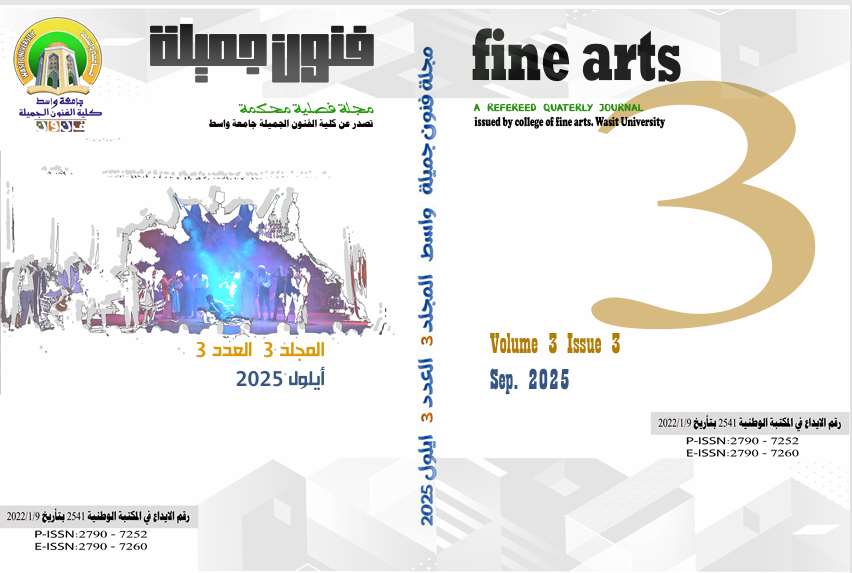Abstract
This research studies the semantic utilization of human, animal, and plant forms. It consists of four chapters. The first chapter is devoted to explaining the research problem, its importance, need, objective, temporal, spatial, and thematic boundaries, as well as defining the terms used within it.
The second chapter consists of two sections: the theoretical framework and previous studies. The theoretical framework consists of three sections:
1) The concept of semantics in art.
2) The semantic employment of forms in ancient Iraqi ceramics.
3) The semantic employment of human, animal, and plant forms in Iraqi ceramics between heritage and modernity.
The third chapter deals with the research procedures, which include the research community, consisting of various ceramic models from contemporary Iraqi ceramics. (3) Forms were intentionally selected to represent the research sample, which were analyzed according to the descriptive analytical approach. Chapter Four includes the research results, conclusions, recommendations, and proposals. Among the findings reached by the study are:
1) Through his present ceramic works (sample models), the contemporary Iraqi artist draws inspiration from his cultural, environmental, and psychological heritage through his metaphors for human, animal, and plant forms.
2) The renewal of style and technique was clearly evident in all the sample models through the use of a realistic approach to representing natural forms, as in sample (2), and an abstract, symbolic approach, as in samples (1 and 3. (
The most important conclusions reached by the study are:
1) Contemporary ceramic artistic experiments by Iraqi artists in their later stages, along with their creative figures, began to search for everything that would stimulate contemporary modern artistic values, with their abstract and symbolic forms, from natural phenomena, and enable them to penetrate the local intellectual structure to produce an innovative character with an authentic identity.
2) The indicators linking contemporary Iraqi ceramic production to its semantic functions are not limited to the suggestive meanings accompanying the artistic production, but rather rely on premises that indicate the presence of a global openness within that production itself. In continuation of the results and conclusions, recommendations and proposals were presented, followed by the sources and references relied upon by the researchers.

